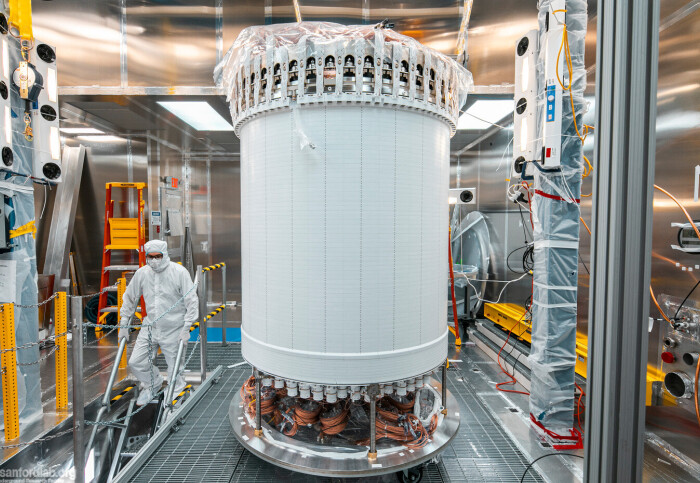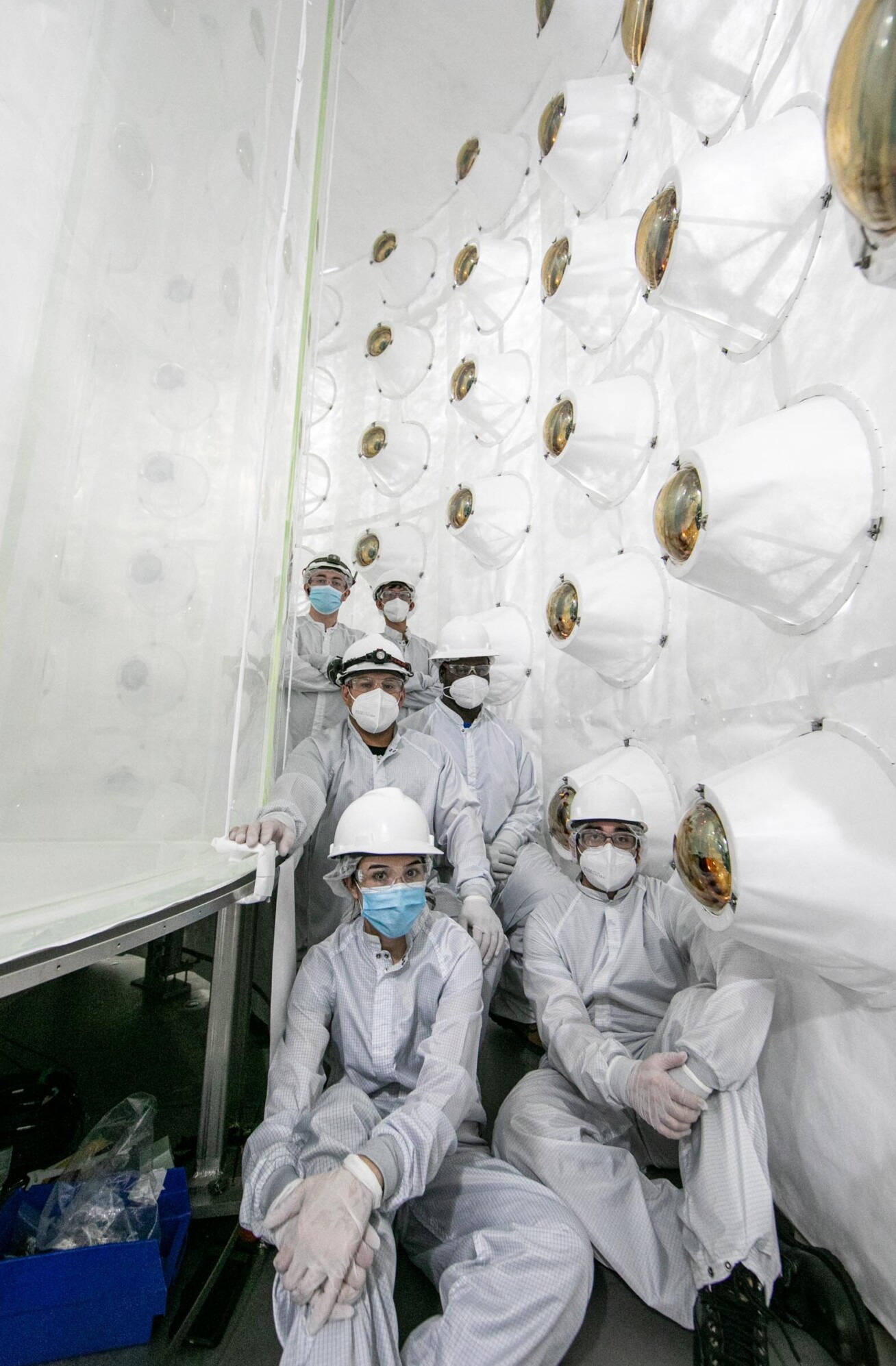
LZ’s central detector in a clean room before delivery underground. Credit: Matthew Kapust/SURF

New results from the world’s most sensitive dark matter detector narrow down the possibilities for what makes up our universe’s invisible mass.
Figuring out the nature of dark matter, the invisible substance that makes up most of the mass in our universe, is one of the greatest puzzles in physics. New results from the world’s most sensitive dark matter detector, LUX-ZEPLIN (LZ), have put new limits on the potential properties of one of the leading dark matter candidates: weakly interacting massive particles, or WIMPs.
If dark matter is within reach, we will find it. Professor Henrique Araújo
LZ, led by the US Department of Energy’s Lawrence Berkeley National Laboratory (Berkeley Lab), hunts for dark matter from a cavern nearly one mile underground at the Sanford Underground Research Facility in South Dakota. A UK team of around 60 researchers in 10 institutes, led by Imperial College London, contributes to the experiment.
The new results, announced at two conferences today, explore areas never searched before. By not finding WIMPs at these energies, the results place further limits what mass they could have. The experiment's sensitivity to faint interactions helps researchers reject potential WIMP dark matter models that don't fit the data, leaving significantly fewer places for WIMPs to hide
International LZ spokesperson Professor Chamkaur Ghag, from University College London, said: “These are new world-leading constraints by a sizable margin on dark matter and WIMPs. If WIMPs had been within the region we searched, we’d have been able to robustly say something about them.”
Professor Henrique Araújo, from the Department of Physics at Imperial, co-led the development of the Xenon Detector at the core of LZ, and coordinated the many contributions made by UK institutes to the experiment. He said: “LZ is performing even better than we’d hoped: we put a great deal of care over many years into designing and then constructing a great experiment such that it would ‘just work’, and this has paid off.
"Now our analysis teams are rising to the occasion, developing new techniques that are both innovative and robust: if dark matter is within reach, we will find it.”
Detecting dark matter
Dark matter, so named because it does not emit, reflect, or absorb light, is estimated to make up 85% of the mass in the universe but has never been directly detected, though it has left its fingerprints on multiple astronomical observations.

LZ uses 10 tonnes of liquid xenon to provide a dense, transparent material for dark matter particles to potentially bump into. The hope is for a WIMP to knock into a xenon nucleus, causing it to move, much like a hit from a cue ball in a game of pool. By collecting the light and electrons emitted during interactions, LZ captures potential WIMP signals alongside other data.
The new results analyse 280 days’ worth of data: a new set of 220 days (collected between March 2023 and April 2024) combined with 60 earlier days from LZ’s first run. The experiment plans to collect 1,000 days’ worth of data before it ends in 2028.
Spotting fakes
LZ’s sensitivity comes from the myriad ways the detector can reduce backgrounds, the false signals that can impersonate or hide a dark matter interaction. Deep underground, the detector is shielded from cosmic rays coming from space. To reduce natural radiation from everyday objects, LZ was built from thousands of ultraclean, low-radiation parts.
The detector is built like an onion, with each layer either blocking outside radiation or tracking particle interactions to rule out dark matter mimics. And sophisticated new analysis techniques help rule out background interactions, particularly those from the most common culprit: radon.
The Imperial team made a key contribution to this analysis through the demonstration of ‘radon tagging’ – whereby individual radioactive atoms in the radon decay chain can be tracked over periods longer than an hour as they move through the multi-tonne liquid xenon target. These decays can therefore be identified as ‘not dark matter’, mitigating a key background.
This result is also the first time that LZ has applied ‘salting’ – a technique that adds fake WIMP signals during data collection. By camouflaging the real data until ‘unsalting’ at the very end, researchers can avoid unconscious bias and keep from overly interpreting or changing their analysis.
The search continues
LZ is a collaboration of roughly 250 scientists from 38 institutions in the US, UK, Portugal, Switzerland, South Korea, and Australia; much of the work building, operating, and analysing the record-setting experiment is done by early career researchers.
The collaboration is already looking forward to analysing the next dataset and using new analysis tricks to look for even lower-mass dark matter. Scientists are also thinking through potential upgrades to further improve LZ, and planning for a next-generation dark matter detector called XLZD.
Based on a press release by the Berkeley National Laboratory.
Article text (excluding photos or graphics) © Imperial College London.
Photos and graphics subject to third party copyright used with permission or © Imperial College London.
Reporter
Hayley Dunning
Communications Division

Contact details
Email: press.office@imperial.ac.uk
Show all stories by this author
Leave a comment
Your comment may be published, displaying your name as you provide it, unless you request otherwise. Your contact details will never be published.




Comments
Comments are loading...